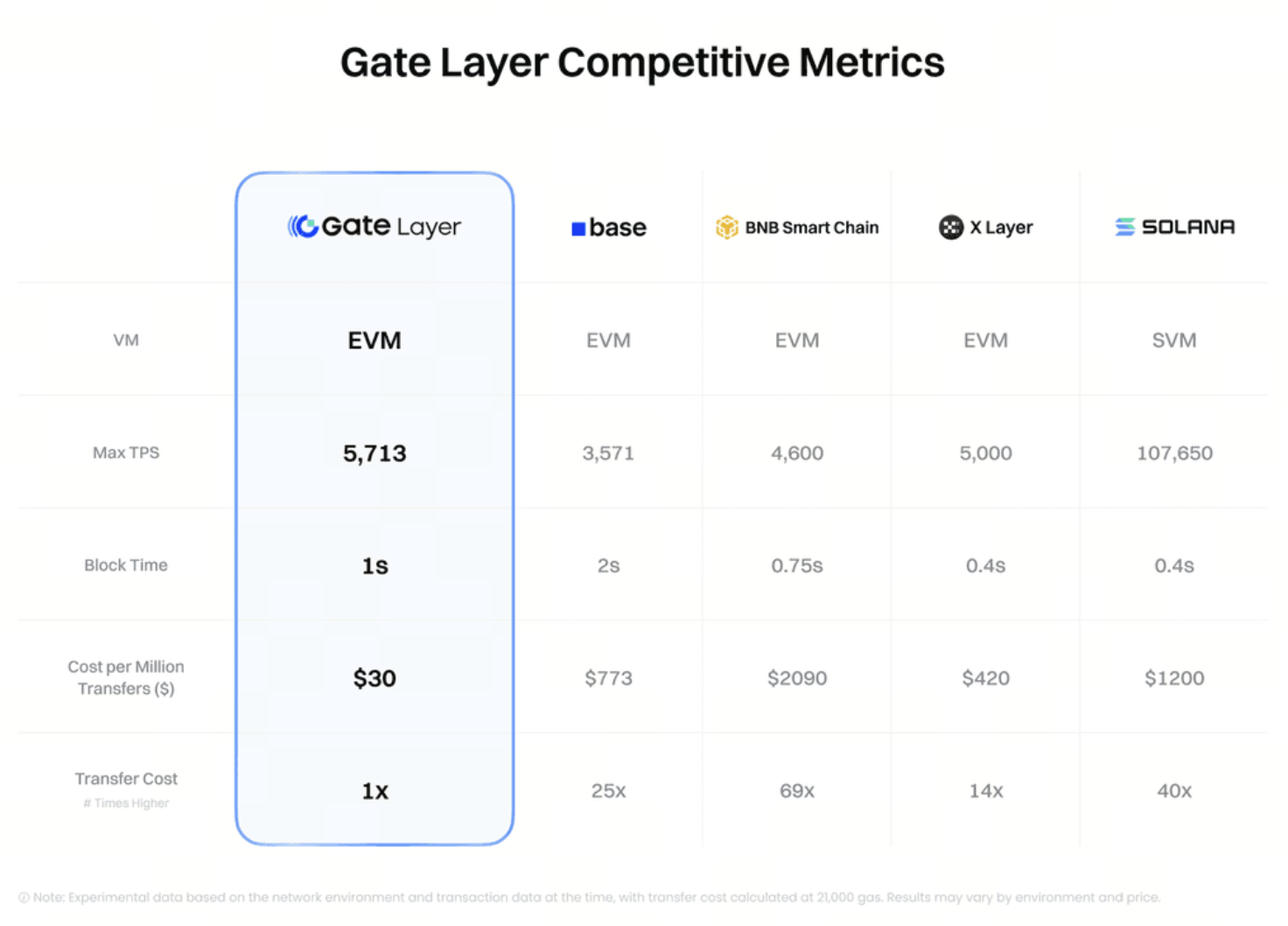Gate’s Comprehensive Upgrade: Launch of Layer 2 Network and the Next Chapter for the GT Ecosystem
A New Catalyst for Web3 Growth
Gate has officially entered a pivotal new phase. It is delivering a more efficient blockchain experience to users worldwide through two major advancements:
The Gate Layer 2 network is now live
The GT token’s ecosystem and economic model have been comprehensively upgraded
These measures not only resolve high costs and low efficiency bottlenecks, but also strengthen GT’s central role—accelerating Web3 adoption and real-world deployment.
Gate Layer: High-Performance Layer 2 Innovation
Gate Layer leverages OP Stack technology and uses Gate Chain as its settlement layer, achieving full EVM compatibility. This allows developers to seamlessly migrate existing DApps without rebuilding and dramatically lowers the technical barriers to entering Web3.
Technical Highlights
Complete EVM compatibility: Supports tools and applications from the Ethereum ecosystem.
Dual security framework: Settlement on the Gate Chain mainnet plus GT staking consensus.
Exceptional performance: with over 5,700 TPS and average block times of just 1 second.
Minimal fees: Costs are significantly lower than other major Layer 2 networks.
Cross-chain capabilities: LayerZero integration enables transfers across ETH, BSC, Polygon, and more.
Cost Advantage
Gate Layer requires only about $30 in fees for one million transfers, compared to roughly $700, $2,000, and $1,000 for similar activity on Base, BSC, and Solana, respectively. These substantial cost savings underscore Gate Layer’s superior efficiency compared to other major Layer 2 networks.

Building a Robust and Diverse Web3 Ecosystem
Gate Layer is more than a high-performance public chain. It’s positioned as the foundational infrastructure for a wide spectrum of applications. The product roadmap features three strategic directions:
Perp: A high-speed decentralized perpetual contract platform, with trading depth and user experience that rival those of centralized exchanges (CEX).
Gate Fun: A cost-effective, no-code token issuance and incubation platform, enabling rapid launches for small teams and meme projects.
Meme Go: A cross-chain meme coin trading and analytics tool with support for ETH, BSC, Solana, and other chains.
GT Token: Value Upgraded
The launch of Gate Layer significantly enhances GT’s functionality and value proposition.
Sole gas token: All on-chain activities—including transactions, smart contracts, NFTs, and cross-chain transfers—require GT.
Dual deflationary model:
Scheduled token burns: As of Q2 2025, 180,555,112 GT have been burned, representing 60.18% of total supply.
On-chain burning: EIP-1559 automatically burns the base fee for every transaction, further increasing GT scarcity.
Gate Chain: Ongoing Technological Evolution
Together with Gate Layer’s progress, Gate Chain has been upgraded to consensus version v1.20:
Supports EIP-4844 blob transactions for improved data processing.
EVM upgraded to the Cancun version.
Compatibility with EIP-2565, EIP-2929, and more protocols.
Enhanced RPC functionality with added blob transaction support.
Conclusion
With the launch of Gate Layer and strengthened GT token mechanisms, this upgrade marks more than just a technical step. It’s a leap toward a more inclusive and foundational Web3 infrastructure. Gate lowers costs, boosts speeds, and expands application scenarios to forge a resilient, sustainable ecosystem that delivers long-term value to developers and users worldwide. To stay updated on ongoing progress and technical developments, visit Gate’s official website and developer community.
Related Articles

Pi Coin Transaction Guide: How to Transfer to Gate.io

Flare Crypto Explained: What Is Flare Network and Why It Matters in 2025

How to Use a Crypto Whale Tracker: Top Tool Recommendation for 2025 to Follow Whale Moves

What is N2: An AI-Driven Layer 2 Solution

2025 BTC Price Prediction: BTC Trend Forecast Based on Technical and Macroeconomic Data
